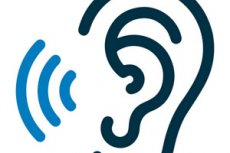New publications
Breakthrough in audiologic research: supernormal auditory perception achieved
Last reviewed: 02.07.2025

All iLive content is medically reviewed or fact checked to ensure as much factual accuracy as possible.
We have strict sourcing guidelines and only link to reputable media sites, academic research institutions and, whenever possible, medically peer reviewed studies. Note that the numbers in parentheses ([1], [2], etc.) are clickable links to these studies.
If you feel that any of our content is inaccurate, out-of-date, or otherwise questionable, please select it and press Ctrl + Enter.

A study conducted at the Kresge Institute for Hearing Research at the University of Michigan Medical School has created supernormal hearing in mice and also supported a hypothesis about the causes of hidden hearing loss in humans.
Previously, researchers used similar techniques—increasing the amount of the neurotrophic factor neurotrophin-3 in the inner ear—to help restore auditory responses in mice that had suffered acoustic trauma and to improve hearing in middle-aged mice.
This study was the first to apply the same approach to healthy young mice to create enhanced auditory processing beyond natural levels.
"We knew that increasing Ntf3 levels in the inner ear of young mice increases the number of synapses between inner hair cells and auditory neurons, but we didn't know how this would affect hearing," said Gabriel Korfas, PhD, director of the Kresge Institute, who led the research team.
"We now show that animals with extra synapses in the inner ear have normal hearing thresholds but can process auditory information at a supranormal level."
The results of the study were published in the journal PLOS Biology.
As in previous studies, the scientists altered Ntf3 expression to increase the number of synapses between inner hair cells and neurons.
Inner hair cells are located inside the cochlea and convert sound waves into signals that are transmitted to the brain through these synapses.
However, this time, two groups of young mice were created and studied: one with a reduced number of synapses, and the second with an increased number of synapses, possessing supranormal hearing.
"We previously used the same molecule to regenerate synapses lost due to noise exposure in young mice and to improve hearing in middle-aged mice when they had already begun to show signs of age-related hearing loss," Korfas said.
"This suggests that this molecule has the potential to improve hearing in people in similar situations. The new findings suggest that regenerating synapses or increasing their number will improve auditory processing."
Both groups of mice underwent a prepulse response inhibition test, which measures their ability to detect very brief auditory stimuli.
In this test, the subject is placed in a chamber with background noise, then a loud tone that frightens the mouse is played, either alone or preceded by a very short pause.
This pause, if detected by the mouse, reduces the fear response. The researchers determined how short the pause had to be for the mice to detect it.
Mice with fewer synapses required significantly longer pauses, a result that supports the hypothesis of a link between synapse density and latent hearing loss in humans.
Hidden hearing loss describes difficulties understanding speech or distinguishing sounds in noise that cannot be detected by standard tests. Results of the prepulse response suppression test have previously been correlated with auditory processing in humans.
Unexpected results
Less expected were the results of mice with an increased number of synapses.
They showed improved peaks in the measured acoustic brainstem response and also performed better on a prepulse response inhibition test, suggesting the ability to process increased amounts of auditory information.
"We were surprised to find that by increasing the number of synapses, the brain was able to process additional auditory information. And these mice performed better on a behavioral test than control mice," Korfas said.
Previously, it was believed that the main cause of hearing loss in humans was the loss of hair cells.
However, it is now clear that loss of inner hair cell synapses may be the first event in the hearing loss process, making therapies aimed at preserving, regenerating, and/or increasing synapse numbers a promising approach to treating some hearing disorders.
"Some neurodegenerative diseases also begin with the loss of synapses in the brain," Korfas said.
"Therefore, lessons learned from inner ear research may help in finding new therapies for some of these devastating diseases."
